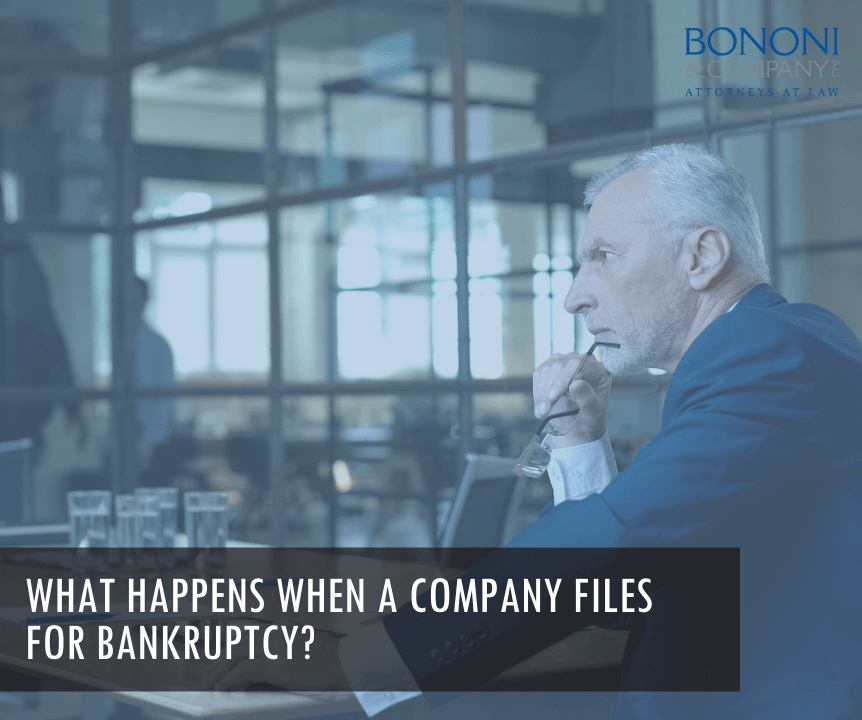
What happens to a company in bankruptcy depends on the chapter of bankruptcy the company has filed. Generally, a company is either filing chapter 7 or chapter 11 bankruptcy.
The simplest explanation of the difference between the two chapters is, generally a chapter 7 means that the business has closed its doors and will no longer operate. Chapter 11 generally means that the business is going to try and reorganize its debts, continue to operate, and pay its creditors by selling assets or generating income through its operations.
In Chapter 7, a Trustee is appointed and the Trustee will sell the assets of the business to help pay the creditors of the business. The assets that are sold are equipment, inventory, customer lists, furniture, vehicles, tools, licenses, and any other assets that may have value. After the items are sold the creditors of the business file claims with the Bankruptcy Court, and the creditors are paid money from the sale of the assets. Sometimes this is all of the money the creditors are owed, sometimes it is less than is owed, it depends on the amount of claims and the value of the assets.
Chapter 11 allows a creditor a certain amount of time to restructure and reorganize its operations and debts. Chapter 11 is a much more in depth process as the Debtor must file reports with the court on a monthly basis to let the court know the status of its operations and financials.
To be successful the business will file, with the assistance of its attorney, a Chapter 11 Plan. This is essentially a document that tells all of the creditors how much they are going to be paid, the order they are going to be paid and how soon.
If you have any questions about the topic discussed in this article, or any bankruptcy law matter, please give us a call at Bononi & Company 724-832-2499. We can help determine the best course of action for your business.
